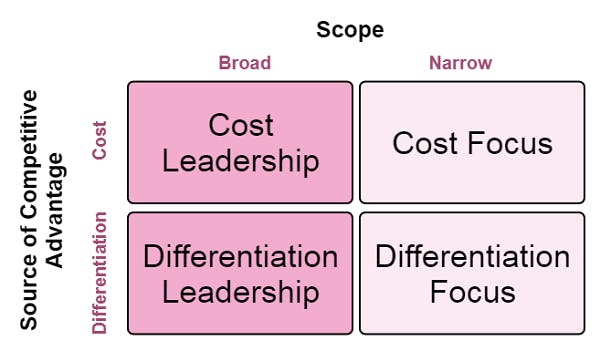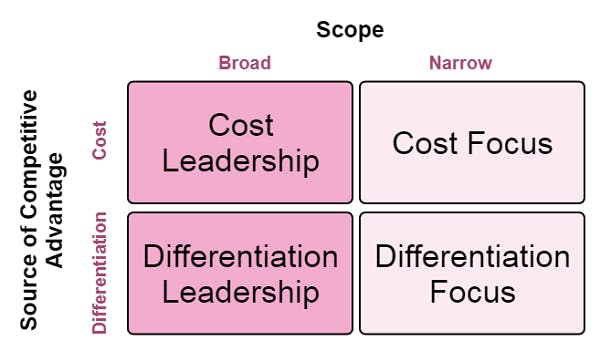Differentiation Strategy: Standing Out in a Competitive Market
Understanding Differentiation Strategy
In today’s highly competitive business landscape, differentiation strategy has emerged as a crucial method for companies seeking to establish a unique position in the market. By focusing on distinct characteristics that set a product or service apart from competitors, businesses can create a competitive edge, foster customer loyalty, and drive profitability.
What is Differentiation Strategy?
Differentiation strategy refers to a business approach where a company develops unique attributes for its products or services that are valued by customers. This uniqueness can stem from various factors, including quality, features, branding, or customer service. The primary goal of differentiation is to make a product or service stand out in the eyes of consumers, allowing businesses to charge a premium price and enhance customer loyalty.
Importance of Differentiation Strategy
The significance of a differentiation strategy cannot be overstated. Here are several key benefits:
- Reduced Price Sensitivity: When customers perceive a product as unique, they are often willing to pay a higher price, leading to increased margins.
- Enhanced Customer Loyalty: Differentiation fosters emotional connections with consumers, encouraging repeat purchases and brand advocacy.
- Competitive Advantage: In saturated markets, a well-executed differentiation strategy can provide a sustainable competitive edge, making it challenging for rivals to compete directly.
Key Components of a Differentiation Strategy
To effectively implement a differentiation strategy, businesses must focus on several critical components:
Unique Value Proposition (UVP)
A Unique Value Proposition is the cornerstone of differentiation. It clearly articulates what makes a product or service unique and why customers should choose it over others. A strong UVP resonates with the target audience and serves as the foundation for all marketing and branding efforts.
Product Features and Quality
Distinctive product features and superior quality are essential elements of differentiation. Companies like Apple and Tesla are prime examples of how unique product attributes can create significant competitive advantages. Apples focus on design and functionality, along with Teslas emphasis on sustainability and technology, exemplify how product excellence can attract customers.

Customer Service and Experience
Exceptional customer service is another vital component of differentiation. Brands that prioritize the customer experience can create strong emotional connections. For instance, companies like Zappos are renowned for their customer service, resulting in loyal customers who often advocate for the brand.
Branding and Marketing
Effective branding and marketing strategies are crucial for communicating a companys unique qualities to its audience. A strong brand identity, combined with compelling storytelling, can differentiate a product in a crowded marketplace. Consider Nike: their branding focuses on empowerment and innovation, making their products desirable beyond just functionality.
Types of Differentiation Strategies
Understanding the various types of differentiation strategies can help businesses identify the most suitable approach for their goals. Here are four primary types:
Product Differentiation
This involves making a product unique through design, features, or performance. For example, Dyson has differentiated its vacuum cleaners through innovative technology and design, making them more effective and appealing than traditional models.
Service Differentiation
Service differentiation focuses on the delivery and customer experience associated with a product. Ritz-Carlton, for instance, is known for its exceptional customer service, creating a luxurious experience that sets it apart from other hotel chains.
Channel Differentiation
Channel differentiation pertains to the methods used to deliver products to customers. Companies can differentiate themselves by utilizing unique distribution channels or providing convenience that competitors do not.
Relationship Differentiation
This strategy centers around building strong relationships with customers. Companies that invest in customer engagement and feedback, such as Starbucks, can create a loyal customer base that feels valued.
Examples of Successful Differentiation Strategies
Several brands exemplify successful differentiation strategies:
Apple Inc.: Innovation and Design
Apple has consistently differentiated itself through innovative design and user experience. Their focus on aesthetics and seamless functionality has created a strong brand loyalty and premium pricing model.
Tesla: Sustainability and Technology
Tesla has carved a niche by focusing on sustainability and cutting-edge technology. Its electric vehicles not only provide a solution to environmental concerns but also feature advanced technology, such as autopilot capabilities.
Nike: Branding and Community Engagement
Nikes emphasis on branding and community engagement has established it as a leader in the athletic wear market. By aligning its products with social causes and fostering a community of athletes, Nike has effectively differentiated itself from competitors.
By understanding the nuances of a differentiation strategy and its components, businesses can position themselves effectively in the market, driving both growth and customer loyalty.
Stay tuned for the next section, where we will explore the challenges in implementing a differentiation strategy, how to measure its effectiveness, and conclude with key takeaways.
Challenges in Implementing a Differentiation Strategy
While a differentiation strategy can yield significant benefits, implementing it is not without challenges. Here are some common hurdles businesses may face:
Cost Implications
Creating unique products or providing exceptional services often involves higher costs. This can include research and development, marketing, and enhanced customer service training. Companies must balance these costs with their pricing strategies to ensure profitability. For instance, companies like Tesla face significant costs in developing innovative technologies while striving to maintain competitive prices.
Risk of Imitation
Once a differentiation strategy proves successful, competitors may attempt to replicate those unique attributes. For example, when Apple introduced its innovative iPhone, other smartphone manufacturers quickly followed suit, leading to a saturated market. To combat this, companies must continually innovate and enhance their offerings to stay ahead of the competition.
Evolving Consumer Preferences
Consumer preferences can change rapidly, making it essential for businesses to remain agile and adaptable. For example, a company that successfully differentiates its product based on sustainability may find that consumers shift their focus to price or convenience over time. Staying attuned to market trends and customer feedback is crucial for long-term success.
Maintaining Consistency
Consistency in delivering the promised differentiation is vital. Any decline in quality or service can lead to customer dissatisfaction and damage the brands reputation. Companies like Zappos, known for their stellar customer service, must ensure that every employee embodies their commitment to customer satisfaction.
Measuring the Effectiveness of Differentiation Strategy
To ensure that a differentiation strategy is effective, businesses must implement appropriate metrics to measure its success. Here are some key indicators:
Customer Feedback
Regularly soliciting feedback through surveys and reviews helps businesses understand how well they are meeting customer expectations. Platforms like SurveyMonkey can be useful for gathering insights into customer perceptions of your unique offerings.
Sales Growth
Monitoring sales growth in relation to marketing efforts aimed at promoting differentiated products can indicate the strategy’s effectiveness. Increased sales often suggest that customers recognize and value the unique aspects of the product or service.
Market Share
An increase in market share can also indicate successful differentiation. If a company gains customers from competitors due to its unique offerings, it may reflect a strong differentiation strategy.
Brand Loyalty
Tracking customer retention rates and loyalty can reveal how effectively a brand has differentiated itself. High retention rates often suggest that customers value the unique qualities that set a company apart from its competitors.
Key Takeaways
Implementing a successful differentiation strategy requires a deep understanding of market dynamics and customer preferences. Here are some essential takeaways:
- Identify Your Unique Value Proposition: Clearly articulate what makes your product or service unique. This should guide all marketing and branding efforts.
- Focus on Quality and Customer Experience: Exceptional product quality and customer service can foster brand loyalty and justify premium pricing.
- Stay Agile: Keep an eye on changing consumer preferences and market trends to adapt your differentiation strategy as needed.
- Measure Success: Utilize key performance indicators to evaluate the effectiveness of your differentiation efforts, making adjustments where necessary.
Frequently Asked Questions (FAQs)
What is a differentiation strategy?
A differentiation strategy is a business approach that focuses on developing unique attributes for a product or service to make it stand out in the market, allowing companies to charge premium prices and build customer loyalty.
How can a business identify its unique value proposition?
Businesses can identify their unique value proposition by researching customer needs, analyzing competitors, and reflecting on what distinct benefits their products or services offer.
Is differentiation strategy suitable for all businesses?
While differentiation can be beneficial for many businesses, it is particularly effective in markets where competition is intense, and customers are looking for unique value. However, it may not be necessary in less competitive markets or for commodities.
Can a differentiation strategy change over time?
Yes, differentiation strategies should evolve in response to market trends, consumer preferences, and competitive pressures. Regularly reviewing and adjusting the strategy is crucial for long-term success.
By understanding the complexities and benefits of a differentiation strategy, businesses can effectively position themselves in the marketplace, ensuring sustainable growth and customer loyalty. Companies must continually adapt and innovate, ensuring that their differentiation remains relevant and compelling in a dynamic business environment.

For further reading on differentiation strategies, you may explore Investopedia for more insights.

